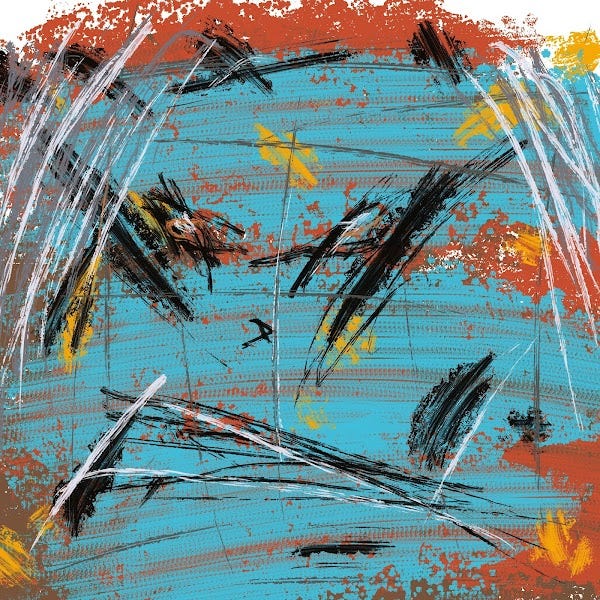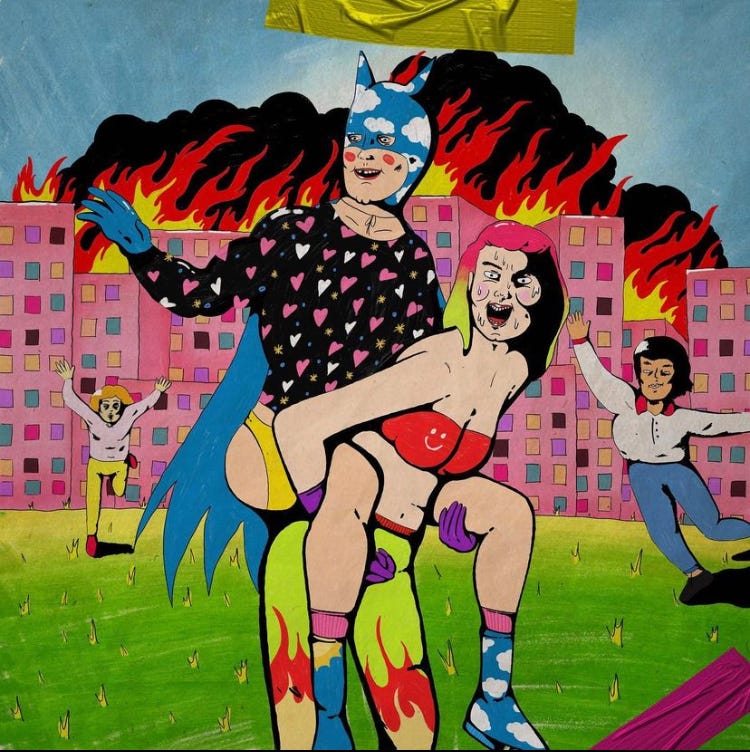On Intentional Inscrutability and Finding Meaning in Art
Artists and collectors have realised there is a difference between object-hype created by influencers, and aesthetic experience that expands metaphor and meaning, but what will they do about it?
It’s become fashionable to denigrate the Bored Ape Yacht Club. While not holy, and not absolved from criticism, there’s a reason we should take notice for what they have done.
Like the sculpting of Egyptian Pharaohs, especially that of Amenothep, the sun-god-obsessed ruler immortalised at Karnac, the work done to create Bored Apes elevates a an idea into a form of artistic realism; in this case, a collective set of ideas about what makes materialist-obsessed culture into a caricature that our digital art world needs.
But, it is not the purpose of this essay to elevate Bored Apes any further. Rather, it’s important to find out where NFT and digital artists can take evolutionary art progress from here.
NFT and Objecthood
In the summer 1967 issue of ArtForum, the art historian Michael Fried wrote a powerful essay deconstructing “the New Literalism”, a type of art that confronted viewers with massive size and theatricality and masked an emptiness and nothingness at its core.
Fried made a few points to define why these aesthetics were farcical:
Objecthood was used to replace artful meaning-making, and it was achieved by assaulting the audience with immensity and aggressive imagery
Theatricality worked as a veil over aesthetic metaphorising; it shunned commonly-held views of beauty judgement and replaced them with overblown (at times) appreciation for the immense power of an object
Fake mystique and looming spectacle — this immense power was nothing more than a kind of allegory, a projected interiority of the art’s core which was missing, since it really depended more on the viewer’s physical reaction to it
There was more to it, but these are the general ideas. The most important point he made was about its sense of nothingness. That’s germane to the point I make in this essay.
Fried wrote that the theatrics used to display large-scale monumental sculptures tricked people into believing there was mystery and specialness to them. The denseness of a thing disguised how devoid of meaning it truly was.
The crypto bois and crypto bros — the folks who are behind much of the NFT hype — have had this moment themselves.
At some point last year, those in the trading and investing set began to con the rest of the market into falling in love with tungsten cubes. Notice something familiar? Here, an intelligent and respected member of the bitcoin lobby stares down pensively at his cube.

Many among the crypto class talked endlessly about the mystery and mystique of the cubes. Even if this was a form of group sarcasm, the similarity to what Fried called the New Literalism is uncanny.
A bidding war even erupted for the right to touch a single very large cube, once a year, led by venture capital and hedge fund investors, among them 3 Arrows Capital founder Su Zhu.
Turning to physical objects and worshipping and beholding their physicality? Anthropomorphising them with mystique and interiority?
Bruh. It’s a piece of hyper-dense metal.

In my amateur view, what Fried pointed out in literalism we see today in NFT JPEG hype with SolMonkes and Moonbirds, and Bored Apes. The same short-circuited view of the art’s mystique, replacing it’s actual lack of aesthetics and it’s limited field of metaphoric vision, is happening in NFTs now. Whether it’s borrowed from the tungsten craze, I don’t know, but the similarities are glaring and obvious.
You hold a certain NFT, you make bank. That’s a powerful allure for a market that is still in its infancy.
Where Do NFTs Get Their Art Energy?
To achieve this raw immensity in the New Literalism, NFTs rely on the online nature of the market. It’s a constant topic of social media conversation.
Where the New Literalism statuary depended on the gestalt of its public viewing experience, NFTs rely on the psychic interaction harvested in social media, driven by things like network effect, hype, celebrity endorsement, endless gushing about “community,” and dramatic prices to overwhelm and intrigue.
This is what digital artists are up against.
The FOMO-driven pursuit to be the next Bored Ape had geared the NFT market to be receptive to mere objects. It’s not about what is inherently linked to art’s history. Nor is it about what is aesthetically identifiable in the art.
It’s about whether or not the right people, at the right time, bought the object and were able to hype the thing to a certain price.
We can argue whether the particular NFT you. may own has “clean” art and is “so sick,” but these are facts. NFTs are simply objects that are being cunningly displayed socially as mystical JPEGs that will change the investing and art world forever.
As a result of the hypebeast-led chat repertoire, digital art creators can easily find themselves generating objects to satisfy these profit-seeking missiles.
Will NFTs Experience an Art and Objecthood Moment?
There is no ART with a capital A. I’m not even going to try to display some elitist tramp stamp for you. That’s not my mission.
But there is a line between what is considered art and a non-art object. The fact that we ignore this is maybe a symptom of the industry’s infancy. I hope.
Where the gestalt experience of space, dimensions, body-consciousness and immensity created the spectacle of non-art physical objects like literalist sculpture, NFTs have their own gestalt. It’s mostly online, and it’s all psychological. NFTS get their hype muscles massaged by the following:
Wallet sizes and portfolio holdings that are publicly searchable and knowable
Celebrity flacking and kingmaking by the likes of investors and social media mavens like Gary Vaynerchuk and friends
Fear of Missing Out culture, which drives the idea that possession is the solution to non-art obssession and is borrowed from finance gurus hyping shitcoins and stocks
Price floors and sweeping
Auctions and bidding wars that get a lot of attention
However, the industry can move towards appreciation for interiority, design ethos, cultural critique, and beauty. It can tell stories with digital art.
Artists need to have confidence, and they have to utilise all the tools at their hands to usher in a deepening of the digital art ethos.
Here are some that I have found online who are doing it.

Jeanine Macola in Sao Paulo, Brasil.
Some Iranian artists work in lithograph and ink and they have really inspired my search for more meaningful aesthetics.
Artists like C3xnna, Marstone and Mojdeh Shams.
What might we look for if we wanted to see an “Art and Objecthood” moment emerge in NFT world?
More 1/1 artists coming from a range of disciplines and geographies
The emergence of art platforms for NFT that are curated or designed to work by invitation and artist inclusion
More curator and art critic writing about the space and more focused paid to educated and informed opinion about art, not tweets from mavens and crypto traders
The best thing that could happen to the NFT space now is that some of the empty objects are burnt forever. And in the ashes may arise a phoenix.
That phoenix philosophy will be using NFTs to push the boundaries of art and will be focused on generating really fine 1/1 pieces.
This will not be art that is created because of a comfort and dependence on the computer.
It’s art that is responsible for promulgating a vision. A vision that will only emerge when we pull art out of the ashes of NFT hype.
That takes risk. That takes confidence. But that momentum is beginning its groundswell.











